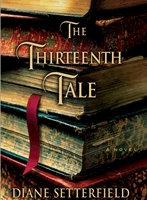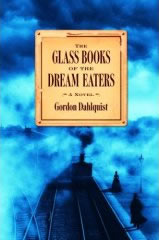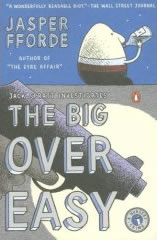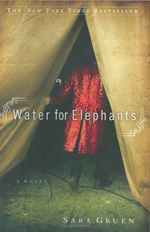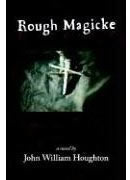2006 was the 10th year I’ve kept track of what I’ve read, and eventually a decade retrospective is in order, but not tonight.
This year’s tally of books is roughly what it was last year – 49 titles. With a several of them being silly easy things, of course, because we were quite busy and I haven’t had the time to read that I used to. This year I managed to write a bit about most books and my impressions, which is cool, because I’ve looked at my past lists sometimes drawn a complete blank at the title and wondered what the heck it was about.
The list is pretty far from what I planned to read at the beginning of the year; that project got abandoned pretty quickly after I blew my new year’s resolution not to buy new books and when I started checking recently published stuff out from the library.
In all, it’s a decent selection of books, but I wish there were a few less throw-away titles on the list. I’m not going to make any grand plans for 2007 reading – I’m still planning to read Proust (I have the first four volumes) which is quite an undertaking, but I don’t want to kill myself in the process. Trying to force myself to read specific books was too difficult. I read to relieve stress, and I found myself resenting the books I assigned myself after awhile, which sort of defeats the purpose.
I’ve already started my very first book of 2007 – I spent the whole day riveted to my friend Garrett’s murder mystery novel, which he printed out and gave to Stephanie earlier this year to read. We only have the first 14 chapters, though, and there are 22, so I’m going nuts because I’m halfway through and I’m dying to know what happens next. I’m going to have so much fun reviewing Garrett’s book.
See the complete tally after the jump.
Fiction
A Feast For Crows
Stranger In a Strange Land
Stakeout on Millennium Drive
The House on the Point: A Tribute to Franklin W. Dixon and The Hardy Boys
The Watchmen (Absolute Edition)
Al Capone Does My Shirts
The Nanny Diaries
The Time Traveler’s Wife
I, Robot
The Final Solution: A Story of Detection
Black Swan Green
Cloud Atlas
The Whole World Over
Deception Point
Don’t I know you?
The Pirates! In an Adventure with Scientists
Geography Club
The Great Gatsby By F. Scott Fitzgerald
Pit of Vipers (Nancy Drew Girl Detective) #18 by Carolyn Keene
Company: A Novel by Max Barry
Hornswoggled (An Alafair Tucker Mystery) by Donis Casey
The Book of Fate by Brad Meltzer
Special Topics in Calamity Physics by Marisha Pessl
Nancy Drew #4: The Girl Who Wasn’t There (Nancy Drew: Girl Detective) by Stefan Petrucha
Rough Magicke by John William Houghton
Non-Fiction
Heavy Words Lightly Thrown: The Reason Behind the Rhyme
Best Lesbian Erotica 2006
Scaling Down
Don’t Make Me Think : A Common Sense Approach to Web Usability
A Theory of Fun for Game Design
The World of Kong: A Natural History of Skull Island
Going for the Bronze: Still Bitter, More Baggage
Girl Sleuth: Nancy Drew and the Women Who Created Her
Blink: The Power of Thinking Without Thinking
The Seven Daughters of Eve
What’s the Matter with Kansas?: How Conservatives Won the Heart of America
Our Town: A Heartland Lynching, a Haunted Town, and the Hidden History of White America
No Place to Hide: Behind the Scenes of Our Emerging Surveillance Society
On Bullshit
How Nancy Jackson Married Kate Wilson and Other Tales of Rebellious Girls and Daring Young Women by Mark Twain and John R. Cooley
Emotions Revealed: Recognizing Faces and Feelings to Improve Communication and Emotional Life by Paul Ekman
Sneaky Uses for Everyday Things: How to Turn a Penny into a Radio, Make a Flood Alarm with an Aspirin, Change by Cy Tymony
Garden Accents: Simple-To-Build Projects to Enhance Your Yard or Garden (How-to Gardening)
Indianapolis Hoosiers’ circle city by Geib, George W.
Hoosier Century: 100 Years of Photography from the Indianapolis Star and News by Indianapolis Star
Indianapolis: a circle city history by Tenuth, Jeffrey
Greater Indianapolis: the history, the industries, the institutions, and the people of a city of homes by Dunn, Jacob Piatt, 1855-1924
Adventures from the Technology Underground: Catapults, Pulsejets, Rail Guns, Flamethrowers, Tesla Coils, Air Cannons, and the Garage Warriors Who Love Them by William Gurstelle
The Sociopath Next Door by Martha Stout
